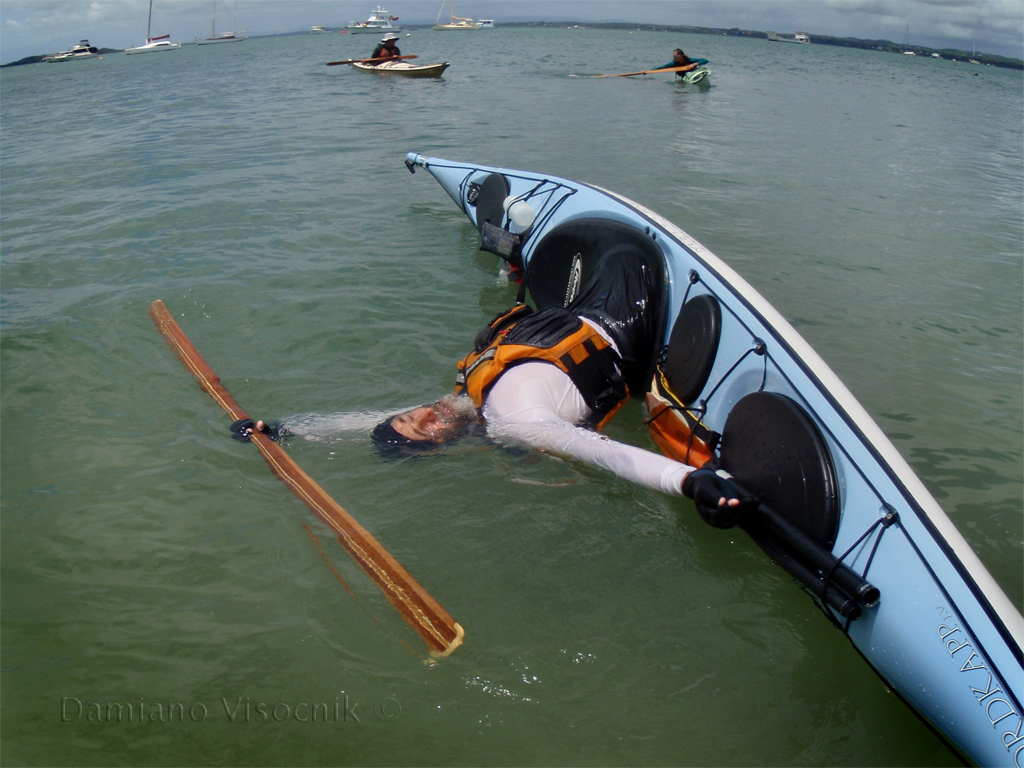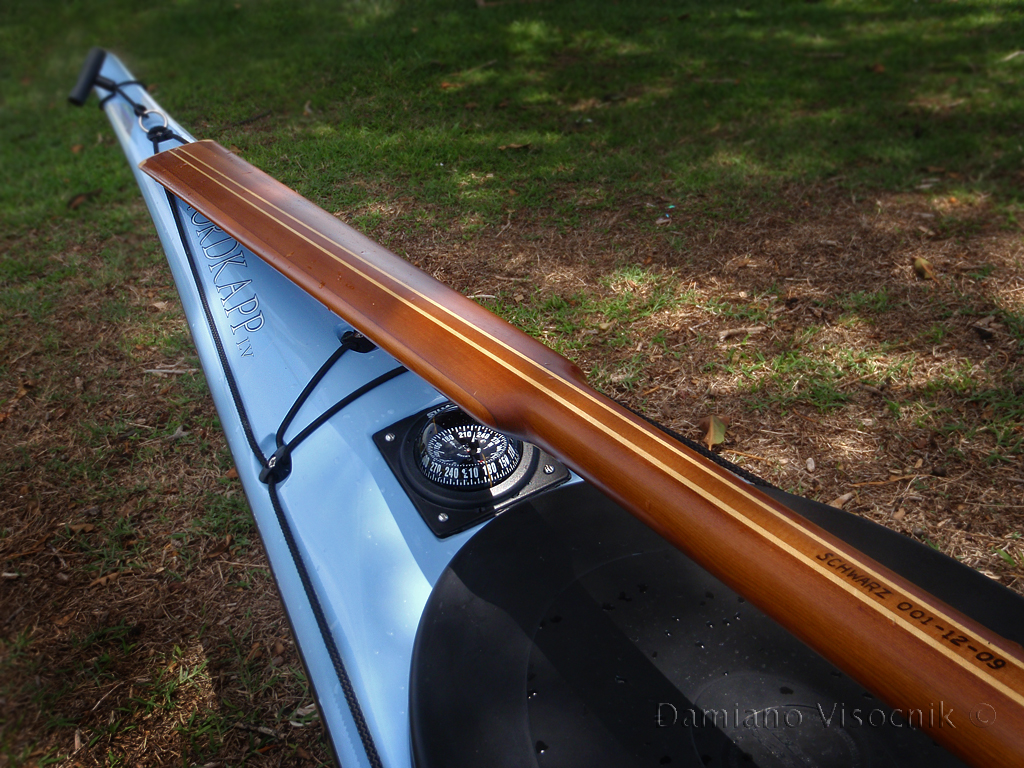Greg has been rolling avidly for some time now.
His favorite DVDs are on Greenland style technique and he challenges himself all the time with a new way to roll.
His rolling is really gentle and beautiful to watch.
He has been using a Werner Ikelos that gradually has unfeathered from a hefty 60 degrees down to 0.
For most of his rolls he prefers his blades parallel so he always knows where the face of the paddle will be when underwater (Ken Whiting advocates that in his instructional video).
Also, some of the rolls require blades to be unfeathered, like in the butterfly roll.
What amazed me though was that Greg despite his love for Greenland style paddling was however not using a Greenland paddle.
While I have witnessed most kayakers that roll (using a Euro style paddle) muscle through the water to bring themselves back up, Greg never uses much blade support when rolling.
Unlike some very good paddlers that can’t roll with a Greenland paddle (are they relying on the resistance that a big bladed Euro or wing paddle offers?) a good roll should be more rotation of the kayak with your hips/thighs than arm muscle.
Lately Greg's interest in the Greenland paddle was rekindled when he borrowed one of my sticks for a few weeks.
Not surprisingly he suddenly saw the light and after a short transition period now advocates GP for finessing a roll or for general paddling.

Greg however was not just happy with the commercial offerings that he saw; he knew he could do better.
Admittedly the sturdiness and lightness of the Werners are hard to beat but Greg saw potential in an easily worked material: Western red cedar.
Some GPs tip the scales at a hefty 1.2Kg (41 oz.) if durability and strength are a factor.
Surely there are some light Western red cedar GPs out there but it’s not unheard of a few of them failing when used with force like in a hard high brace or while surfing.
Greg decided that a laminated paddle would offer most strength and thin strips of reinforcement of Silver Ash were used for additional strength..jpg)
.jpg)
Using wood that adds strength usually translated to a denser material that consequently will be heavier.
The only way you could end up with a paddle that is strong but does not weigh too much is to shave away material where it is not needed.
Since the GP’s shape should not be altered too much externally, the option is to remove wood that adds little strength: internally.
On the same principal that the foam core of his Werner carbon paddle adds little strength to the whole paddle, Greg knows that the wood inside the paddle does not offer a great deal of sturdiness.
He therefore hollowed the guts (core) of his Greenland paddle.
Painstakingly removing unnecessary material from the loom sections of wood before lamination, Greg shaved away a significant amount of weight (150 gr) without compromising the integrity of the paddle.
Once the various pieces of Western red cedar and Silver Ash had the core routed out he laminated them together with epoxy.
From there he carved away the surface to achieve the desired final shape..jpg)
The finish on his paddle is epoxy first with a light coat of boiled linseed oil.
The results are amazing, something these images can’t give credit.
The joints are superb and the look is outstanding. .jpg)
The paddle offers incredible buoyancy and despite its light weight has a great sturdy feel (very little flex, unlike some light weights I have tried).
For the record, Greg shaved away 150 gm of wood (hole of 20 mm diameter the length of the loom) from a 220 cm long paddle.
The loom measures 38x35 mm (oval diameter), max blade width is 87mm and tips at the scales at 865 gr (29.8 oz.).

It took him 45 hours to complete the paddle and if this paddle would be commercially available would cost a bomb.
Greg has made a second paddle for his wife Moira.
At 210 cm long, with a slightly smaller loom diameter of 35x32 mm (hollowed out at 16 mm) her paddle weights an insane 677 grams (23.4 oz.)!
Greg is confident that his paddle is as strong as any commercial offering despite being light but as any Western red cedar paddle it needs to be treated with care since it damages easier than a carbon one.
Closer to a work of art than a tool, Greg’s Greenland paddle is superb and the performance while rolling and sculling is noticeable superior to any GP I have tried.



Brilliant! Thanks for sharing.
ReplyDeleteHey Gnarley,
ReplyDeleteThats some 40g (or so from memory) less than the Elver paddle you've got isn't it? How do the tow differ in the water in feel? Can you notice the weight when paddling, and how does Gregs paddle shape feel? (It looks less rounded and flatter than my paddles)
Regards,
Tom
Tom,
ReplyDeleteyour Elver paddle is, according to Greg's scale, just over 1 Kg.
Greg's paddle has been finished with epoxy resin making it heavier that what he expected but Moira's paddle is substantially lighter since it's finished just with linseed oil.
Greg's paddle is rather thick and with rounded edges since he wanted a GP suited best for rolling (easier on the hands when edges are thick). Your paddle somehow enters the water smoother than a thick edged one and is a bit quieter.
Greg's paddle has a bit less flex than yours.
Greg's paddle, if commercially available, would cost 5 times as much as yours, if constructed by hand.